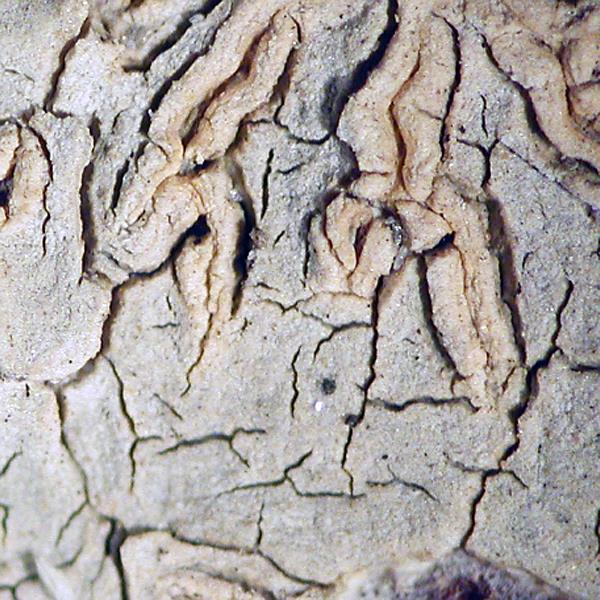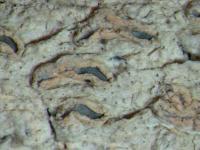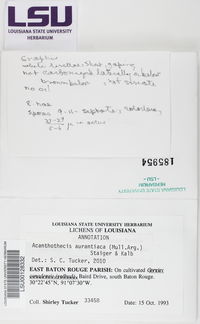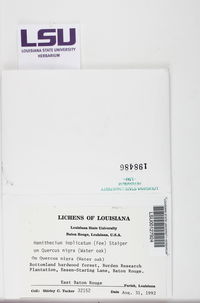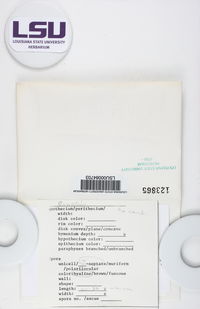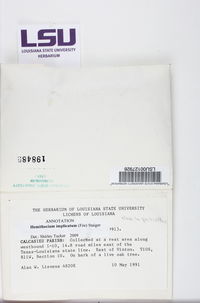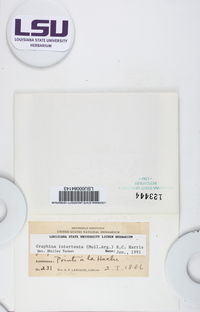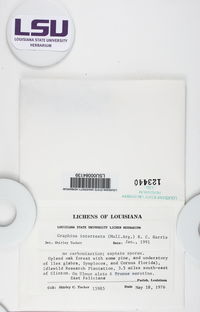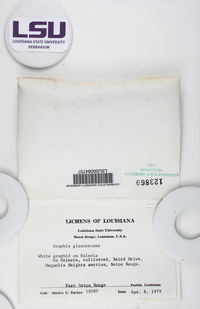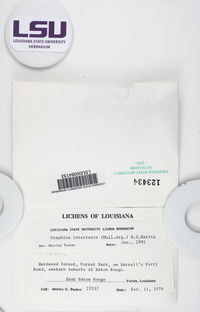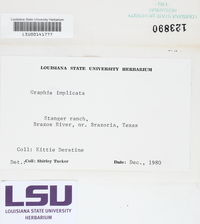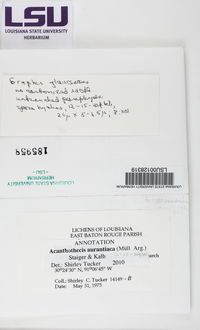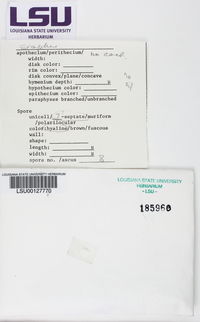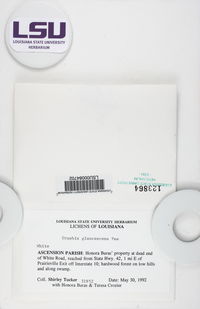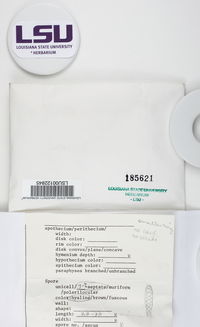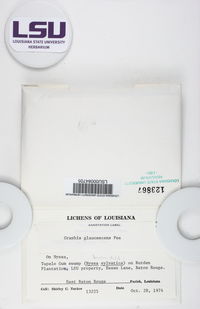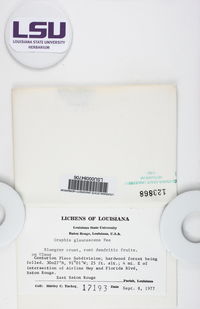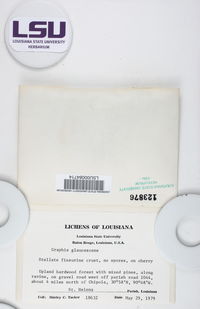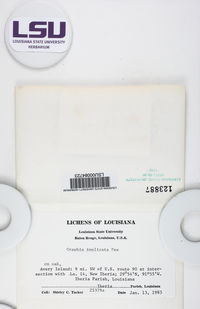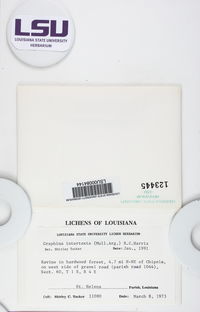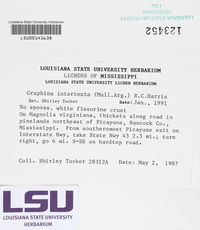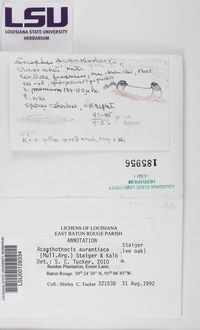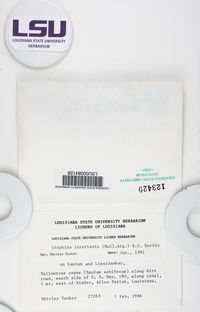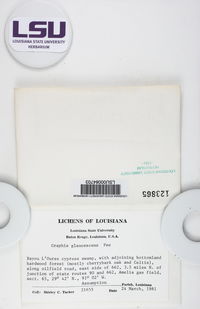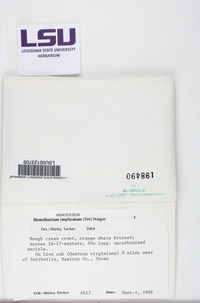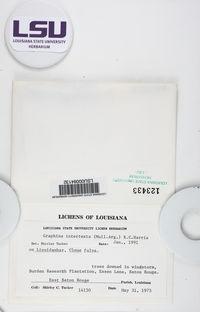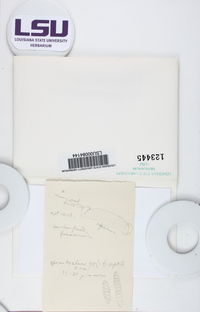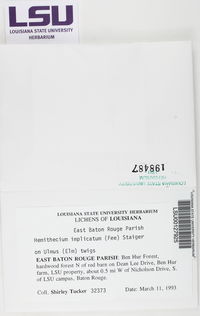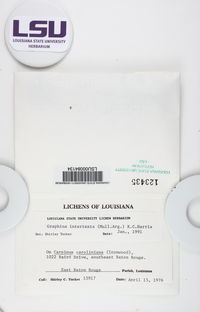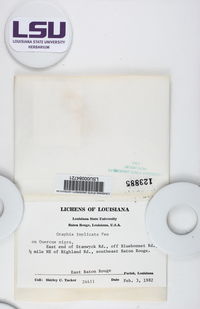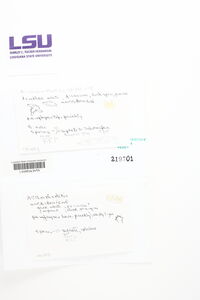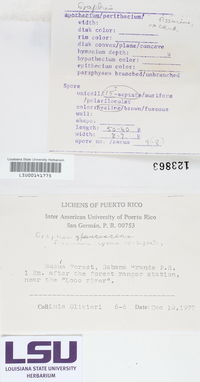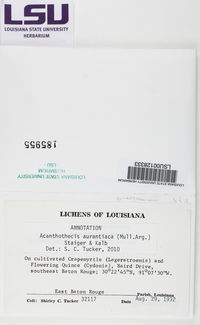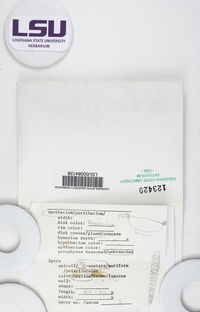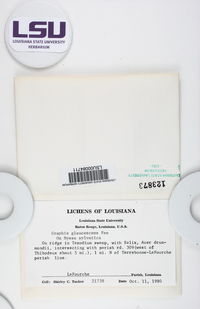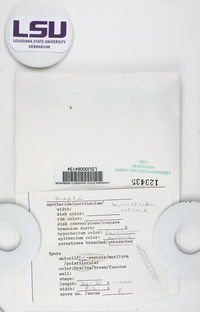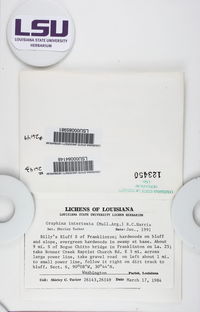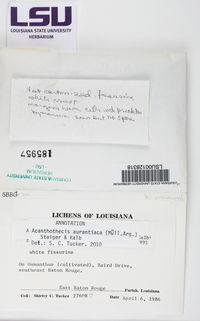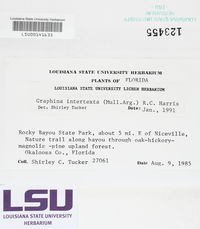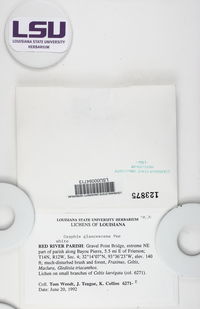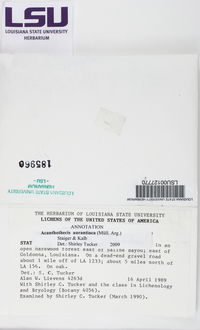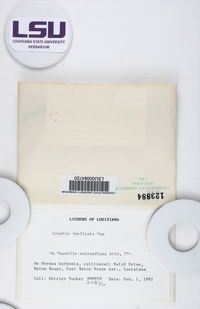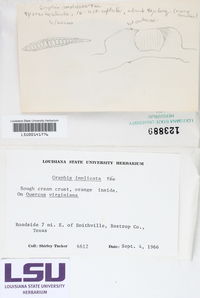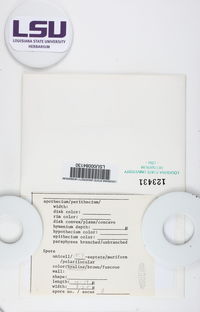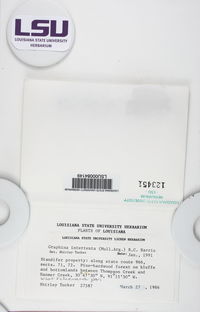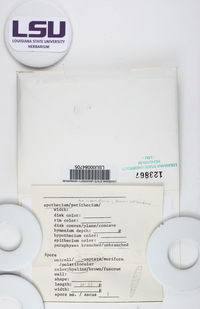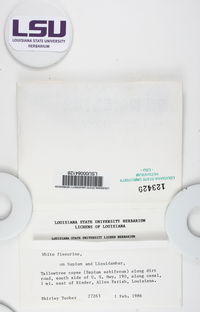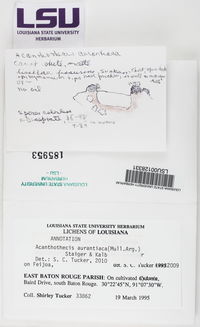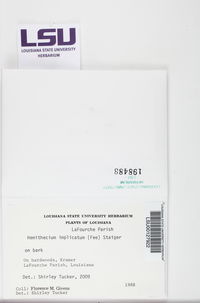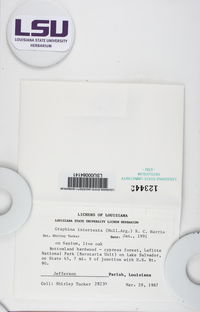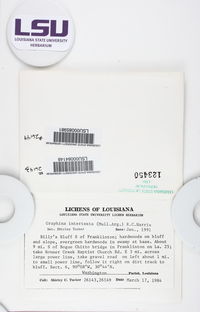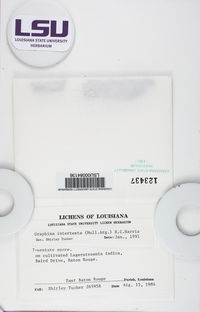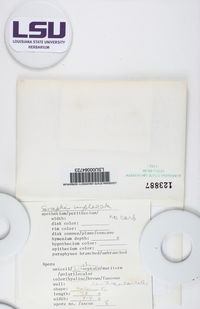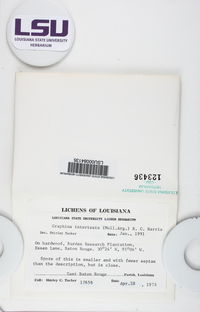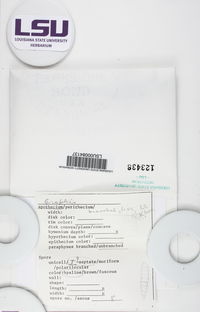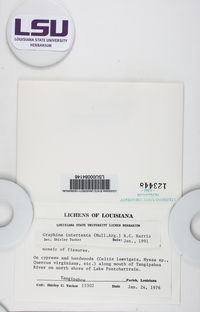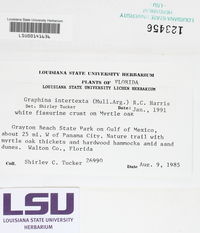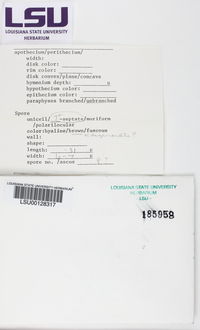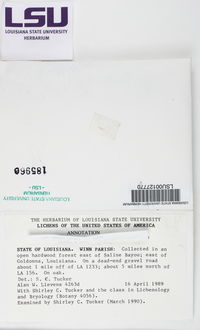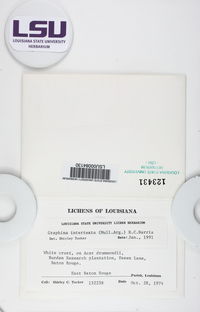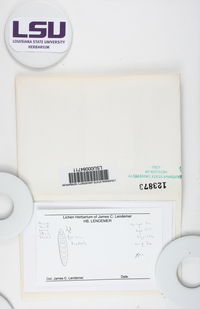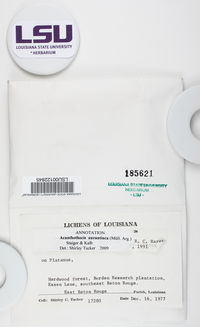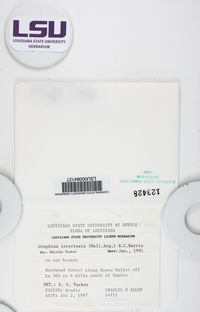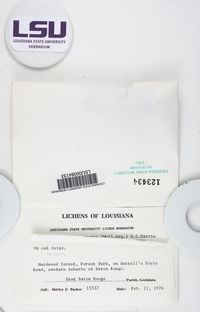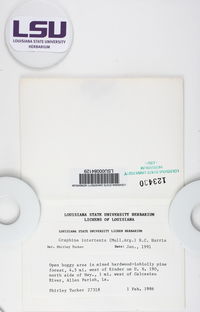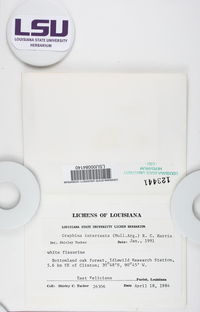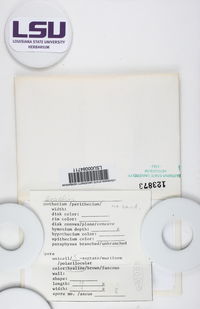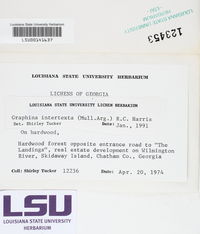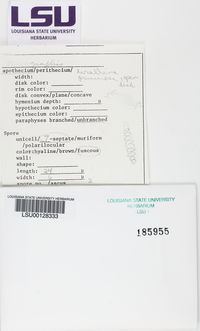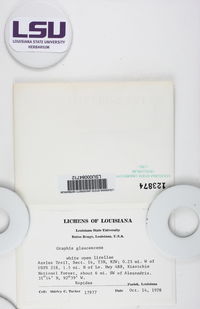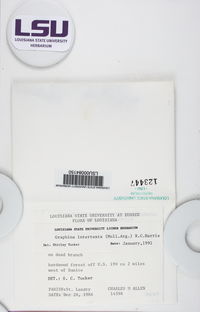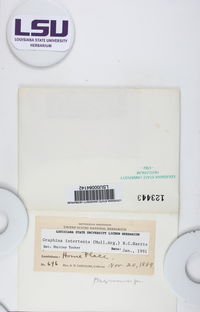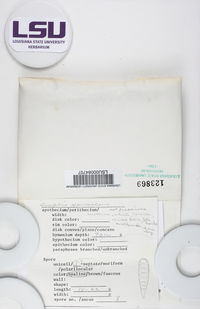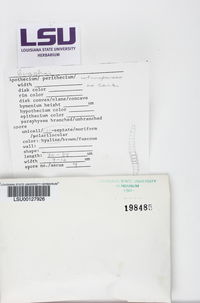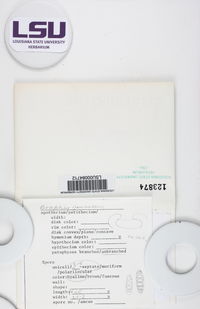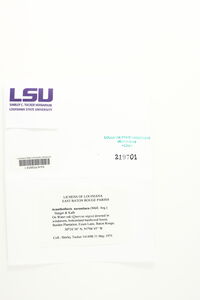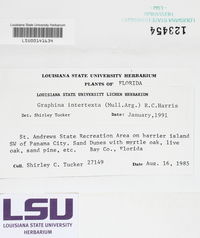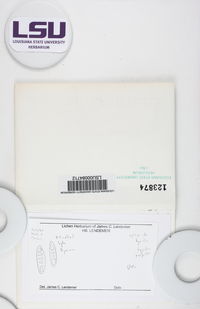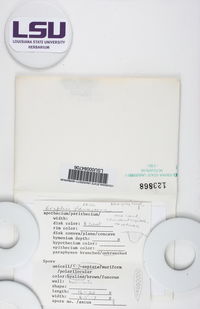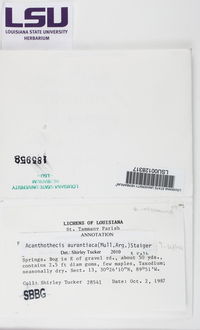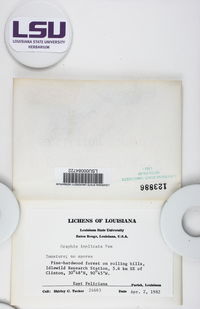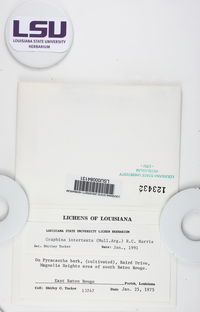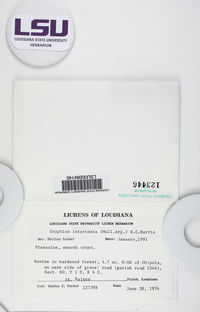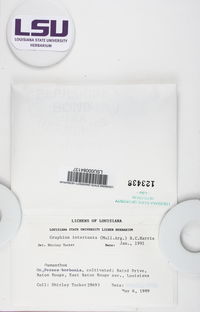
Consortium of Lichen Herbaria
- building a Global Consortium of Bryophytes and Lichens as keystones of cryptobiotic communities -
- Home
- Search
- Images
- Species Checklists
- US States: O-Z >
- US National Parks
- Central America
- South America
- US National Parks
- Southern Subpolar Region
|
|
|
|
Family: Graphidaceae
[Acanthothecis intertexta (Müll. Arg.) Staiger & Kalb, moreGraphina intertexta (Müll. Arg.) R.C. Harris, Graphis intertexta Müll.Arg., Phaeographis aurantiaca Müll.Arg.] |
Nash, T.H., Ryan, B.D., Gries, C., Bungartz, F., (eds.) 2004. Lichen Flora of the Greater Sonoran Desert Region. Vol 2. Thallus: crustose, mostly distinctly rimose, often cracked along the lirellae surface: cream-colored, white or pale gray, dull or mealy pulverulent medulla: white, with numerous deposited crystals Apothecia: flush with the thallus or a little raised, lirellate lirellae: numerous, sometimes clustered, oblong, rarely branched, 1-2 x 0.2 mm disc: flesh to orange colored, narrow to distinctly open/ exposed, with white pruina margin: concolorous with the thallus or slightly paler, often ±yellowish orange towards the slit, inconspicuous or ±swollen, entire exciple: not carbonized, excipular base as well as the side poorly developed, with crystal-needles and loosely woven hyphae epihymenium: pale gray perhaps only due to light refraction of the warts, 5-10 µm thick hymenium: hyaline to slightly orange (only herbarium-material?), not inspersed, 90-130 µm tall paraphyses: 1-1.5 µm thick, with hyaline tips, with a warty surface periphysoids: present at apices and inner sides of the margins, hyaline, 10-20 µm long, with a warty surface subhymenium: hyaline, c. 15 µm thick asci: clavate 120-130 x 20-25 µm, 6-8-spored ascospores: hyaline or pale yellow to orange, transversely septate, 10-24-locular, with cylindrical to slightly rounded locules, 30-70 x 6-8.5 µm , I- Pycnidia and conidia: not found Spot tests: K+ yellow to red, C-, KC-, P+ yellow Secondary metabolites: norstictic and connorstictic acids, trace of stictic acid in the type of Graphis intertexta. Substrate and ecology: on bark in tropical to subtropical areas World distribution: so far only known from Australia, Louisiana, Jamaica (types of Graphis intertexta and Phaeographis aurantiaca), and Mexico Sonoran distribution: coastal Sinaloa. Notes: The spores of the Sonoran specimen have more septa and are larger (16-24-locular, 50-73 µm long) than given for Acanthothecis aurantiaca in previous papers (10-17 locular, 30-53 µm long, according to Staiger and Kalb 2000, Staiger 2002). However, these studies were only based on a few specimens (the type specimens of Graphis intertexta and Phaeographis aurantiaca) so that probably the variability of the spore size and septation was not completely covered. All other characters correspond well with the type and support conspecificity with A. aurantiaca. |
Powered by Symbiota

